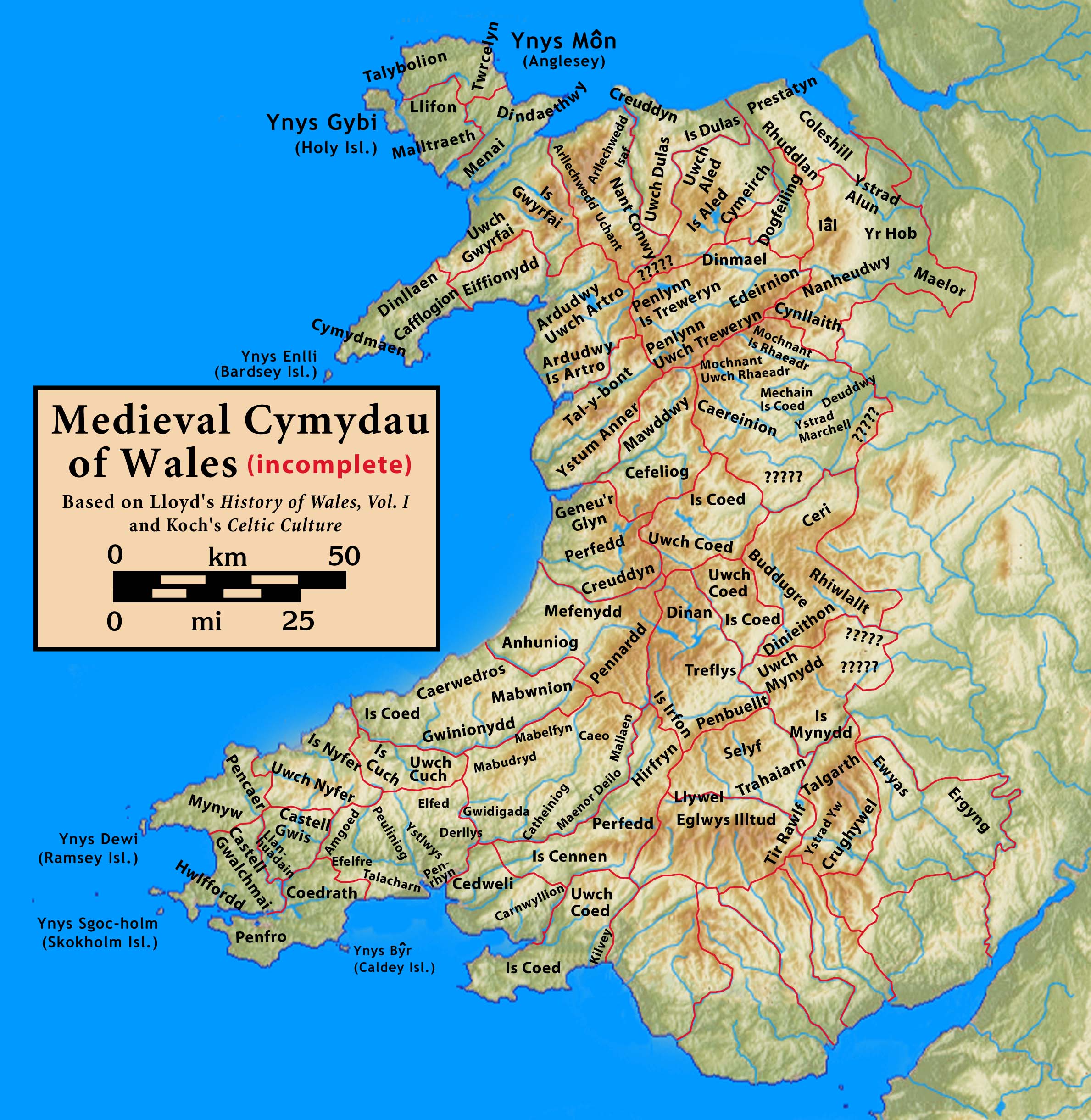Penllyn (cantref) on:
[Wikipedia]
[Google]
[Amazon]
 Penllyn (head of the lake i.e.
Penllyn (head of the lake i.e.
 Penllyn (head of the lake i.e.
Penllyn (head of the lake i.e. Bala Lake
Bala Lake, or (), is a large freshwater glacial lake in Gwynedd, Wales. The River Dee, which has its source on the slopes of Dduallt in the mountains of Snowdonia, feeds the long by wide lake. It was the largest natural body of water in ...
or ) was a medieval cantref
A cantref ( ; ; plural cantrefi or cantrefs; also rendered as ''cantred'') was a Wales in the Early Middle Ages, medieval Welsh land division, particularly important in the administration of Welsh law.
Description
Land in medieval Wales was divid ...
originally in the Kingdom of Powys
The Kingdom of Powys (; ) was a Welsh successor state, petty kingdom and principality that emerged during the Middle Ages following the end of Roman rule in Britain. It very roughly covered the northern two-thirds of the modern county of Pow ...
but annexed to the Kingdom of Gwynedd
The Kingdom of Gwynedd (Medieval Latin: ; Middle Welsh: ) was a Wales in the Early Middle Ages, Welsh kingdom and a Roman Empire Succession of states, successor state that emerged in sub-Roman Britain in the 5th century during the Anglo-Saxon ...
. It consisted of the commote
A commote (, sometimes spelt in older documents as , plural , less frequently )'' Geiriadur Prifysgol Cymru'' (University of Wales Dictionary), p. 643 was a secular division of land in Medieval Wales. The word derives from the prefix ("together" ...
s () of Edeyrnion, Dinmael, and ( signifying 'below' and 'above' the River Tryweryn).
On the north and west it bordered Gwynedd (the cantrefi of Tegeingl
Tegeingl, known as Englefield in English, was a cantref in north-east Wales during the mediaeval period. It was incorporated into Flintshire following Edward I of England's conquest of northern Wales in the 13th century.
Etymology
The region's ...
, Rhufoniog
Rhufoniog was a small sub-kingdom of the Dark Ages Gwynedd, and later a cantref in medieval Wales.
Geography
The cantref Rhos lay between it and the Irish Sea. Sometimes the two cantrefi were linked together as "Rhos and Rhufeiniog", which ...
, Dunoding and Meirionydd); it bordered the Powys cantrefi of Maelor
The Maelor is an area of north-east Wales along the border with England. It is now entirely part of Wrexham County Borough. The name ''Maelor'' is an old Welsh word: it can be translated as "land of the prince", from ''mael'' ("prince") and ''l ...
, Mochnant
was a medieval cantref in the Kingdom of Powys. In the 12th century it was divided into the commotes of Mochnant Is Rhaeadr (in the north) and Mochnant Uwch Rhaeadr (in the south) (''Is'' signifying 'below' and ''Uwch'' 'above' the River Rhaeadr) ...
and Cyfeiliog on the east and south.
After the death of Madog ap Maredudd
Madog ap Maredudd (, ; died 1160) was the last prince of the entire Kingdom of Powys, Wales. He held for a time, the FitzAlan Lordship of Oswestry, family of the Earl of Arundel, Earls of Arundel, of Arundel Castle. His daughter married Lord Rhys ...
, the last Prince of the whole of Powys, and his eldest son and heir in 1160, the kingdom was divided between his surviving sons Gruffydd Maelor
Gruffydd Maelor (died 1191) was a Prince of Powys Fadog in Wales. He married a daughter of King Owain Gwynedd, first Prince of Wales, and was a brother of Prince Owain Brogyntyn, ancestor of the Barons of Cymmer-yn-Edeirnion.
Lineage
Maelor ...
, Owain Fychan
Owain Fychan ap Madog (alternatively ''Owain Vychan ap Madoc''; c. 1125 – 1187) was styled Lord of Mechain, Mechain Is Coed and one of the sons of Madog ap Maredudd. His mother was Susanna, daughter of Gruffudd ap Cynan.
Division of the Kingd ...
and Owain Brogyntyn, his nephew Owain Cyfeiliog
Owain ap Gruffydd (c. 1130–1197) was a prince of the southern part of Powys and a poet. He is usually known as Owain Cyfeiliog to distinguish him from other rulers named Owain, particularly his contemporary, Owain ap Gruffydd of Gwynedd, who is ...
and his half-brother Iorwerth Goch. Penllyn was inherited by Owain Brogyntyn; Edeyrnion had been the home of his mother (who was not married to his father) and he may also have been raised there.
The military skill and strength of Madog had prevented Gwynedd from asserting hegemony
Hegemony (, , ) is the political, economic, and military predominance of one State (polity), state over other states, either regional or global.
In Ancient Greece (ca. 8th BC – AD 6th c.), hegemony denoted the politico-military dominance of ...
over Powys, but following Madog's death, it was able to force Owain Brogyntyn to become a vassal
A vassal or liege subject is a person regarded as having a mutual obligation to a lord or monarch, in the context of the feudal system in medieval Europe. While the subordinate party is called a vassal, the dominant party is called a suzerain ...
. Penllyn was thus annexed to Gwynedd.
Following the eventual defeat of Gwynedd by English forces, and the consequent Statute of Rhuddlan
The Statute of Rhuddlan (), also known as the Statutes of Wales ( or ''Valliae'') or as the Statute of Wales ( or ''Valliae''), was a royal ordinance by Edward I of England, which gave the constitutional basis for the government of the Principal ...
, it became part of Merionethshire
Merionethshire, or Merioneth ( or '), was Historic counties of Wales, one of the thirteen counties of Wales that existed from 1536 until their abolishment in 1974. It was located in the North West Wales, north-west of Wales.
Name
'Merioneth' is a ...
References
{{reflist Cantrefs History of Powys